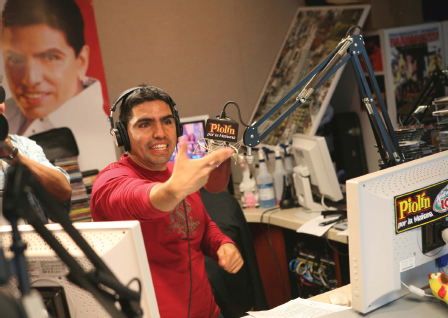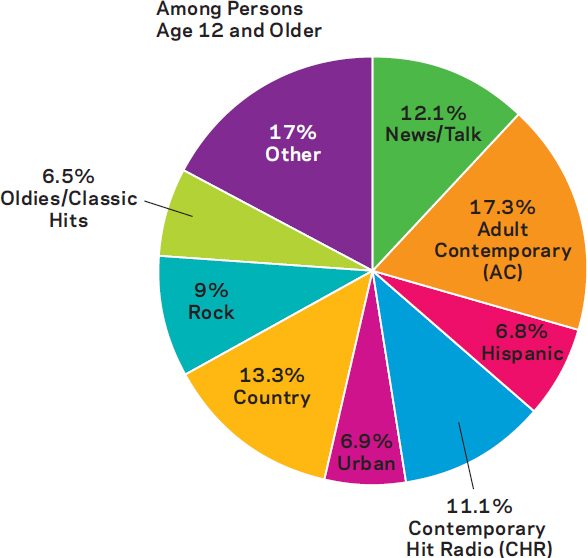Format Specialization
Printed Page 176
Radio stations today use a variety of formats to serve diverse groups of listeners. (See Figure 6.1.) To please advertisers, who want to know exactly who is listening, formats usually target audiences according to their age, income, gender, or race/ethnicity. Radio’s specialization enables advertisers to reach smaller target audiences at costs much lower than those for television. The most popular formats include the following:

- News and talk radio. As the most popular format in the nation, news and talk radio has been buoyed by the popularity of personalities like Howard Stern, Tavis Smiley, and Rush Limbaugh. This format tends to cater to adults over age thirty-five (except for sports talk programs, which draw mostly male sports fans of all ages). Though more expensive to produce than a music format, it appeals to advertisers seeking to target working and middle-class adult consumers (see “Media Literacy Case Study: Host: The Origins of Talk Radio”).
- Adult contemporary (AC). This format, also known as middle-of-the-road, or MOR, is among radio’s oldest and most popular formats. It reaches over 17 percent of all listeners, most of them older than forty, with an eclectic mix of news, talk, oldies, and soft rock music. Broadcasting magazine describes AC as “not too soft, not too loud, not too fast, not too slow, not too hard, not too lush, not too old, not too new.”
- Top 40/contemporary hit radio (CHR). Encompassing everything from rap to pop rock songs, this format appeals to many teens and young adults. Since the mid-1980s, however, these stations have lost ground steadily as younger generations have followed music first on MTV and now online rather than on radio.
- Country. Claiming the most stations, this format consists of tiny markets where country is traditionally the default format for communities with only one radio station. Country music has old roots in radio, starting in 1925 with the influential Grand Ole Opry program on WSM in Nashville.
- Urban. In 1947, WDIA in Memphis was the first station to program exclusively for black listeners. This format targets a wide variety of African American listeners, primarily in large cities. Urban typically plays popular dance, rap, R&B, and hip-hop music (featuring performers like Rihanna and Tyga).
- Spanish-language radio. One of radio’s fastest-growing, this format is concentrated mostly in large Hispanic markets such as Miami, New York, Chicago, Las Vegas, California, Arizona, New Mexico, and Texas. Besides talk shows and news segments in Spanish, this format features a variety of Spanish, Caribbean, and Latin American musical styles.

In addition to the formats above, today some stations specialize their formulas by focusing on album-oriented rock (AOR), which features album cuts from mainstream rock bands. There are even several spin-offs from AOR. Classic rock serves up rock oldies from the mid-1960s through the 1980s to the baby-boom generation and other listeners who have outgrown the Top 40. The oldies format serves adults who grew up on rock and roll from the 1950s through the 1970s. The alternativemusic format recaptures some of the experimental approach of the FM stations of the 1960s, although with much more controlled playlists, and has helped to introduce artists such as the Black Keys and Arcade Fire. Research indicates that most people identify closely with the music they listened to as adolescents and young adults. This tendency partially explains why oldies and classic rock stations combined have surpassed Top 40 stations today. It also helps to explain the recent nostalgia for music from the 1980s and 1990s.